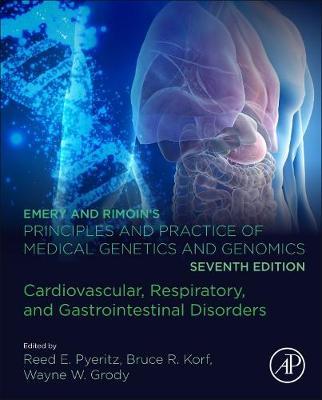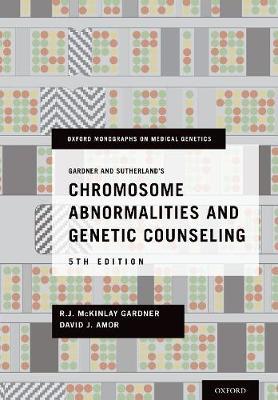Emery and Rimoin’s Principles and Practice of Medical Genetics and Genomics: Cardiovascular, Respiratory, and Gastrointestinal Disorders 7th Edition
Emery and Rimoin’s Principles and Practice of Medical Genetics and Genomics: Cardiovascular, Respiratory, and Gastrointestinal Disorders 7th Edition:
Emery and Rimoin’s Principles and Practice of Medical Genetics and Genomics: Cardiovascular, Respiratory, and Gastrointestinal Disorders, Seventh Edition includes the latest information on seminal topics such as prenatal diagnosis, genome and exome sequencing, public health genetics, genetic counseling, and management and treatment strategies. This comprehensive, yet practical, resource emphasizes theory and research fundamentals relating to applications of medical genetics across the full spectrum of inherited disorders and applications to medicine. Updated sections in this release cover the genetics of cardiovascular, respiratory and gastrointestinal disorders, with an emphasis on genetic determinants and new pathways for diagnosis, prevention and disease management.
In addition, genetic researchers, students and health professionals will find new and fully revised chapters on the molecular genetics of congenital heart defects, inherited cardiomyopathies, hypertension, cystic fibrosis, asthma, hereditary pulmonary emphysema, inflammatory bowel disease, and bile pigment metabolism disorders among other conditions.
Additional ISBNs:
∗ eText ISBN: 0128126809, 9780128126806, 9780128126806
- See additional information on the Amazon.
More Details
Emery and Rimoin’s Principles and Practice of Medical Genetics and Genomics: Cardiovascular, Respiratory, and Gastrointestinal Disorders 7th Edition:
Section 1. Cardiovascular Disorders
1. Congenital Heart Defects
1.1. Introduction
1.2. The Evaluation of the Patient With Congenital Heart Defect
1.3. Embryology
1.4. Specific Syndromes With Congenital Heart Defect
1.5. Genes Responsible for Congenital Heart Malformations as Monogenic Traits
1.6. Environmental Causes and the Teratogen Syndromes
1.7. Maternal Diabetes
1.8. Maternal Cigarette Smoking
1.9. Maternal Drug Ingestion
1.10. Folic Acid Supplementation
1.11. The Adult With Congenital Heart Defect
1.12. Empirical Risks for Offspring
1.13. Future Developments
Appendix 1
Appendix 2
Appendix 3
Appendix 4
Appendix 5
Appendix 6
Appendix 7
Appendix 8
Appendix 9
Appendix 10
Appendix 11
Appendix 12
Appendix 13: Syndromes Tetralogy
2. Genetic Cardiomyopathies
2.1. Introduction
2.2. Hypertrophic Cardiomyopathy
2.3. Dilated Cardiomyopathy
2.4. Arrhythmogenic Right Ventricular Cardiomyopathy
2.5. Ventricular Noncompaction
2.6. Conclusion
3. Hereditary Hemorrhagic Telangiectasia (Osler–Weber–Rendu Syndrome)
3.1. Introduction
3.2. Phenotype and Natural History
3.3. Genetics
3.4. Genotype–Phenotype Correlations in HHT
3.5. ALK1 Signaling and HHT Pathogenesis
3.6. Animal Models of HHT
3.7. Mechanistic Basis of AVM Pathogenesis
3.8. Diagnosis
3.9. Management
4. Genetics of Electrophysiologic Disorders
4.1. Long QT Syndrome
4.2. Brugada Syndrome
4.3. Catecholaminergic Polymorphic Ventricular Tachycardia
4.4. Arrhythmogenic Right Ventricular Cardiomyopathy
4.5. Medical Workup after Sudden Unexplained Death
5. Heritable Thoracic Aortic Disease: Single Gene Disorders Predisposing to Thoracic Aortic Aneurysms and Acute Aortic Dissections
5.1. Mechanisms of Heritable Thoracic Aortic Disease Due to Highly Penetrant, Pathogenic Variants in Single Genes
5.2. Gene-Based Clinical Management for Heritable Thoracic Aortic Disease
6. The Genetics of Blood Pressure Regulation
6.1. Introduction
6.2. History
6.3. Complexity of Blood Pressure Regulation
6.4. Single Gene Conditions with Hypertension or Hypotension
6.5. The GWAS Era
6.6. Conclusions
7. Genetics and Genomics of Atherosclerotic Cardiovascular Disease
7.1. Introduction
7.2. Mouse Models of Atherosclerosis
7.3. Candidate Gene Studies in Humans
7.4. Family-Based Studies in Humans
7.5. Association Studies in Humans
7.6. GWAS Findings for Atherosclerotic Traits
7.7. Mendelian Randomization
7.8. Genetic Risk Scores and Prediction Algorithms for Personalized Medicine
7.9. Summary and Future Directions
8. Genetic Disorders of the Lymphatic System
8.1. Introduction
8.2. Development of the Lymphatic System
8.3. Disorders of the Lymphatic System
8.4. Autosomal Dominant Inheritance
8.5. Autosomal Recessive Inheritance
8.6. Mosaic Disorders with Lymphatic Phenotype
8.7. Genetic Counseling
9. Disorders of the Venous System
9.1. Introduction
9.2. The Venous System
9.3. Disorders of the Venous System
10. Capillary Malformation/Arteriovenous Malformation
10.1. Introduction
10.2. Capillary Malformation
10.3. Sturge–Weber Syndrome
10.4. Capillary Malformation—Arteriovenous Malformation
11. Cerebral Cavernous Malformations, Molecular Biology, and Genetics
11.1. Introduction
11.2. Clinical Genetics
11.3. CCM Molecular Genetics
11.4. CCM Protein Partners and Signaling Pathways
11.5. Modeling Human CCM Disease in Mouse Models for the Development of Pre-clinical Trials
Section 2. Respiratory Disorders
12. Cystic Fibrosis
Summary
12.1. Incidence of Cystic Fibrosis
12.2. Clinical Features
12.3. Genetics
12.4. Diagnosis and Differential Diagnosis
12.5. Management
13. Genetic Underpinnings of Asthma and Related Traits
Glossary
Nomenclature
13.1. Introduction
13.2. The Genetics of Asthma and Allergic Diseases
13.4. Conclusion
Support
Conflict of Interest
14. Hereditary Pulmonary Emphysema
Abbreviations
14.1. Introduction
14.2. Diseases With Airflow Limitation: Definitions
14.3. Phenotypic Evaluation in COPD
14.4. Cigarette Smoking and COPD
14.5. Severe AAT Deficiency
14.6. Risk of COPD in Z Allele Heterozygotes
14.7. COPD and COPD-Related Phenotypes in Other Genetic Syndromes
14.8. Risk to Relatives for Non-AAT COPD?
14.9. Linkage Analysis
14.10. Genetic Association Studies
14.11. Animal Models of COPD
14.12. Conclusions
15. Genetic Determinants of Interstitial Lung Diseases
15.1. Introduction
15.2. Idiopathic Interstitial Pneumonias
15.3. Genetic Basis of IIP
15.4. Systemic Diseases that can Cause ILD
15.5. Other Genetic Diseases that Can Cause ILD
15.6. Other Restrictive Lung Diseases
15.7. Conclusion
16. Heritable and Idiopathic Forms of Pulmonary Arterial Hypertension
16.1. Historical Perspectives and Introduction
16.2. Nomenclature
16.3. Incidence and Prevalence of HPAH and IPAH
16.4. Phenotype and Natural History of HPAH and IPAH
16.5. Inheritance and Genetics of PAH in Families
16.6. Connecting BMPR2 to PAH
16.7. Molecular and Cellular Pathogenesis
16.8. Diagnosis
16.9. Management
16.10. Counseling
Section 3. Gastrointestinal Disorders
17. Gastrointestinal Tract and Hepatobiliary Duct System
17.1. Introduction
17.2. Embryological Background
17.3. Classification of Gastrointestinal Disorders
17.4. The GI Microbiome
18. Inflammatory Bowel Disease
18.1. Introduction and Disease Definition
18.2. Phenotypic Heterogeneity
18.3. Racial and Ethnic Differences
18.4. Familial Aggregation
18.5. Twin and Spouse Studies
18.6. Inferences Regarding Mode of Inheritance
18.7. Association of Inflammatory Bowel Disease with Rare Genetic Syndromes
18.8. Associations With Other Diseases
18.9. Gene and Environmental Interactions
18.10. Gene Identification
18.11. Meta-Analysis Across all Genome Scans
18.12. Candidate Gene Studies (Table 18.10)
18.13. Clinical Application of Genetic Information
19. Bile Pigment Metabolism and Its Disorders
19.1. Introduction
19.2. Formation of Bilirubin
19.3. Structure of Bilirubin
19.4. Possible Physiologic Benefits of Biliverdin and Bilirubin
19.5. Bilirubin-Induced Neurological Dysfunctions
19.6. Disposition of Bilirubin
19.7. Bilirubin in Body Fluids
19.8. Disorders of Bilirubin Metabolism
Index
































 Dentistry
Dentistry
Reviews
There are no reviews yet.